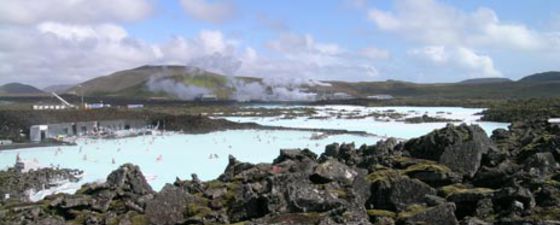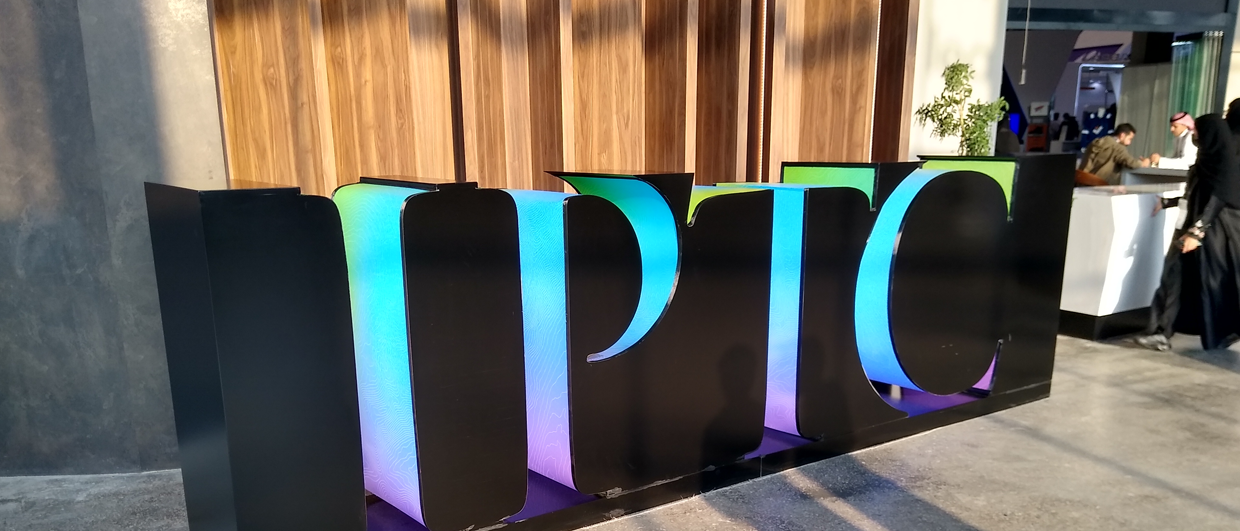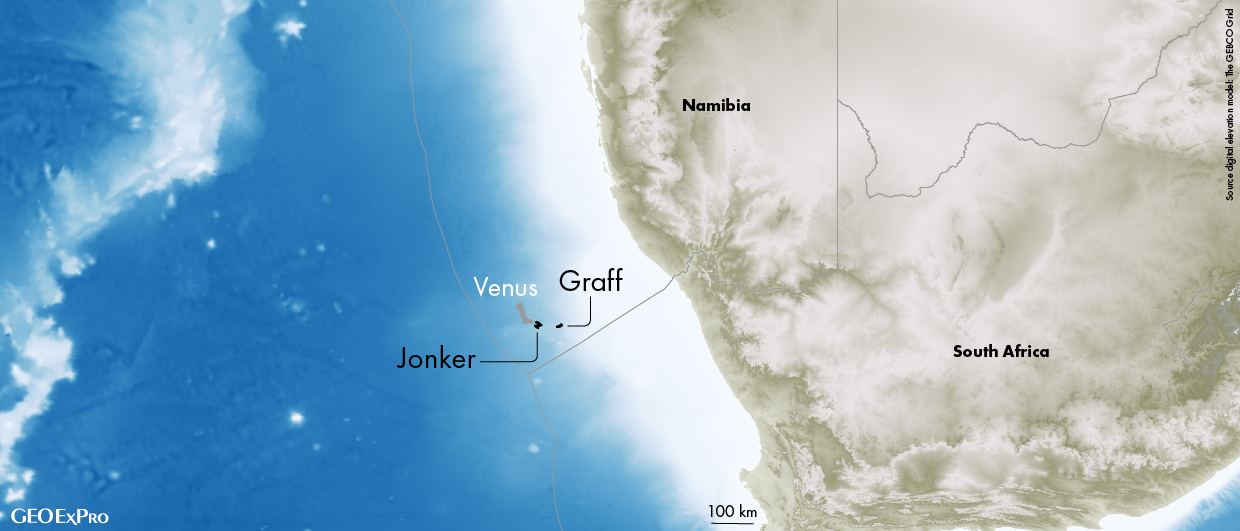What will happen when the oil runs out? How can we stop climate change? Questions like this are appearing more and more frequently in the media.
Those involved in the energy industry know that there are still plenty of hydrocarbons available for extraction, though the task gets more demanding every year. But the pressures of responding to climate change also mean that an increasing amount of our energy is coming from non-fossil fuels. At present these only account for a tiny fraction of the world’s energy needs and most have their own technical and environmental challenges.
A change to low carbon energy is expected to be gradual, and fossil fuels will continue to provide a large proportion of the world’s energy for many years to come. Climate change, however, dictates that the energy change must come, and any development that helps that change will be welcome.
“Fossil fuels will continue to provide a large proportion of the world’s energy for many years to come”
Geothermal energy
Most renewable energy sources, such as biomass, solar, wind and tidal, have little to do with geoscience, unless it is the limited input of choosing suitable sites. A source in which geoscience is of crucial importance, however, is in making use of the natural heat of the Earth, or geothermal energy. (GEO ExPro No 1, 2005; GEO ExPro No 5, 2007).
What many people think of as geothermal, is actually hydrotherma, where groundwater is heated by near surface rocks, perhaps associated with volcanic activity. This emerges, or can be produced, as steam to generate electricity, or hot water for space heating. The well-known hot springs and hydrothermal power plants in Iceland are an example of this type of source. These sources can sometimes be enhanced by injecting water to increase their power. Another type of geothermal project is ‘hot dry rocks’, where a closed fluid circulation system uses fractures induced in the rocks to bring the Earth’s heat to the surface.
So far these sources are limited, often relying on hot spots near the surface, and many have significant technical problems, such as the highly corrosive nature of the fluids. But those involved in the oil and gas business know that many wells do encounter high temperatures, and mostly we can deal with the fluids we find. Further, ‘dry’ wells are not dry at all, but find hot water in the rocks, not oil or gas – just what we need for a geothermal source. Even if we don’t usually find temperatures high enough to generate electricity, maybe there’s something that can be done with this widespread potential resource that has so far been ignored?
Geothermal energy in The Netherlands
That’s what two groups in The Netherlands, Aardwarmte Den Haag and Delft Aardwarmte Project, have been looking at in one of the most populated areas in Western Europe, near the city of The Hague. Aardwarmte Den Haag aims to provide hot water extracted from a reservoir at some 2km depth to heat new housing developments of about 4,000 houses. The Delft project is looking into embedding a geothermal source into a city grid heating network. This network, on the campus of Delft University of Technology (TUD), also contains conventional energy sources. Using both these sources creates the possibility of combining energy production with Carbon Capture and Sequestration (CCS) by injecting CO2 together with the cooled water that is returned to the reservoir. This is currently an important research topic.
Heating The Hague
 Acoustic Impedance volume of Jurassic sandstone targets (Base Cretaceous shown as black line). © dGBAardwarmte Den Haag is a joint venture between the Gemeente Den Haag (Municipality of The Hague) and several energy and building companies. They are building some 4,000 new houses in the south-west of The Hague, and the geothermal project will provide central heating for those houses. This is done by drilling a ‘geothermal doublet’ – one injector and one producer well – into a suitable sandstone reservoir. The producing well will collect hot water at about 75oC and transfer the heat to the housing heating grid using a heat exchanger. The injector is drilled updip from the producer and re-injects the cooled water into the reservoir. This technique was first put into operation successfully in The Netherlands by a Dutch tomato grower, supported by the TNO Built Environment and Geosciences research institute, when in 2007 they constructed a geothermal plant that provides heating in tomato greenhouses.
Acoustic Impedance volume of Jurassic sandstone targets (Base Cretaceous shown as black line). © dGBAardwarmte Den Haag is a joint venture between the Gemeente Den Haag (Municipality of The Hague) and several energy and building companies. They are building some 4,000 new houses in the south-west of The Hague, and the geothermal project will provide central heating for those houses. This is done by drilling a ‘geothermal doublet’ – one injector and one producer well – into a suitable sandstone reservoir. The producing well will collect hot water at about 75oC and transfer the heat to the housing heating grid using a heat exchanger. The injector is drilled updip from the producer and re-injects the cooled water into the reservoir. This technique was first put into operation successfully in The Netherlands by a Dutch tomato grower, supported by the TNO Built Environment and Geosciences research institute, when in 2007 they constructed a geothermal plant that provides heating in tomato greenhouses.
“Dry wells are not dry at all”
Reservoir characterisation
A key step in this process is the characterisation of the reservoir that is used in the injection-production cycle. In fact, the two main reservoirs that will be used in the project, the Upper Jurassic Delft and Rijswijk sandstones, were the targets of oil and gas exploration by the Nederlands Aardolie Maatschappij (NAM) in the 1980s and 1990s. NAM covered the Hague, Rijswijk and Delft areas with 3D seismic and also drilled a number of wells. These data have been used by an advisory consortium consisting of TNO Built Environment and Geosciences together with the consultant companies IF technology and dGB Earth Sciences to pick optimal locations for the geothermal doublets.
Paul de Groot of dGB Earth Sciences explains. “In the same way as we need to know the characteristics of oil and gas reservoirs to place the wells and model production, so we need to know what will happen with geothermal reservoirs. We need to find a good quality sand with good permeability that the water will flow through, and we need to avoid large faults between injector and producer that may act as permeability barriers.” Paul’s colleague, Arnaud Huck adds: “Of course, in geothermal exploration, we also need high temperatures. For heating projects this is usually above 70 degrees centigrade. We can determine local temperature gradients from the existing wells. But whereas oil and gas wells usually target structural highs such as anticlines, we want to drill deep in the reservoir to get high temperatures, so synclines are good potential targets”.
Optimising the wells
 Seismic interpretation in the surroundings of Delft showing suitable reservoir conditions for the geothermal project. © dGBdGB used 3D seismic data provided by TNO to build an acoustic impedance data cube, though they had to model the low frequency model from data outside the survey area. From this they were able to map the depth and thickness of the Delft sandstone and see the stratigraphic contrasts. To see the faults, they measured the similarity of the 3D data cube, an attribute that expresses how alike two or more seismic trace segments are. The similarity result was then used in their proprietary ridge enhancement filtering and neural network FaultCube software to map both major and minor fault zones.
Seismic interpretation in the surroundings of Delft showing suitable reservoir conditions for the geothermal project. © dGBdGB used 3D seismic data provided by TNO to build an acoustic impedance data cube, though they had to model the low frequency model from data outside the survey area. From this they were able to map the depth and thickness of the Delft sandstone and see the stratigraphic contrasts. To see the faults, they measured the similarity of the 3D data cube, an attribute that expresses how alike two or more seismic trace segments are. The similarity result was then used in their proprietary ridge enhancement filtering and neural network FaultCube software to map both major and minor fault zones.
These techniques enabled the consortium and Aardwarmte Den Haag to update the existing reservoir model and reposition the producer well to the optimum position. The injector configuration was also changed slightly. The wells are scheduled to be drilled towards the end of 2009. Cost estimates of the project made by the Municipality of The Hague have shown that the unit costs of installation and operation are expected to be comparable to that of having individual gas-fired heating in each house, using 2006 gas prices. The CO2 emissions, however, are likely to be some 65% lower. With improving techniques in this new technology and also if gas prices rise, the cost of a geothermal project could become lower than traditional gas heating.
Combining strengths
At the Delft University of Technology, just to the south of The Hague, researchers are aiming to take this technique further. A 3D seismic survey recorded by NAM for oil and gas exploration revealed an anticlinal structure directly below the University where the reservoirs are at a sufficient depth to provide the temperatures needed for a geothermal project. The researchers, together with students and alumni, formed the Delft Aardwarmte Project (DAP – the Delft Geothermal Project) to investigate the possibility of using geothermal energy to heat the university campus. TU Delft has its own power plant and a distribution network, so there was an existing demand for heat that was compatible with the proposed project. But they didn’t want to stop here. The development of a geothermal source at the university campus would create a wealth of research opportunities. The construction of a second heating grid had been approved, making an improved heat evacuation route available. The new source would be embedded into the grid that also contained other -conventional- energy sources. Therefore an inherently reliable multi-source system could be created.
Add some sparkling water
 Schematic of combined geothermal and CCS plant. A-producing well; B-Heat transfer to heating grid ‘C’; D-Injector well for water and captured CO2; E-cooled water and CO2 captured in reservoir. Copyright: DAP“With the geothermal source embedded in a network, and co-located with conventional energy systems, we realised that we could generate further synergy”, says Andries Wever of DAP. “Geothermal projects are not fully CO2 neutral, as they need electricity to power the pumps. This electricity is generally from carbon-based energy sources. However, with Carbon Capture and Storage (CCS) these days becoming integrated in many large governmental programmes, it would be of significant research benefit to integrate it in our geothermal project. We had the idea to inject ‘sparkling water’ back into the reservoir instead of just cooled water. This sparkling water would contain CO2 captured from our power plant. Whereas innovative geothermal operations are part of the current operational planning of the project, the scientific parts are focussing on the effects of including CO2“.
Schematic of combined geothermal and CCS plant. A-producing well; B-Heat transfer to heating grid ‘C’; D-Injector well for water and captured CO2; E-cooled water and CO2 captured in reservoir. Copyright: DAP“With the geothermal source embedded in a network, and co-located with conventional energy systems, we realised that we could generate further synergy”, says Andries Wever of DAP. “Geothermal projects are not fully CO2 neutral, as they need electricity to power the pumps. This electricity is generally from carbon-based energy sources. However, with Carbon Capture and Storage (CCS) these days becoming integrated in many large governmental programmes, it would be of significant research benefit to integrate it in our geothermal project. We had the idea to inject ‘sparkling water’ back into the reservoir instead of just cooled water. This sparkling water would contain CO2 captured from our power plant. Whereas innovative geothermal operations are part of the current operational planning of the project, the scientific parts are focussing on the effects of including CO2“.
Many technologies
 Schematic view of rig proposed for Delft geothermal project.These effects include the corrosive and cementation effects of CO2 on the reservoir formation, the tubing and other equipment, the influence on the hot water production, and whether CO2 would induce early break-through of cooled water into the producing well.
Schematic view of rig proposed for Delft geothermal project.These effects include the corrosive and cementation effects of CO2 on the reservoir formation, the tubing and other equipment, the influence on the hot water production, and whether CO2 would induce early break-through of cooled water into the producing well.
Andries continues – “Fortunately, at Delft we have access to researchers covering a wide range of disciplines, and this project creates a lot of research scope, both in planning and execution. We also have many technology partners, mostly alumni, who can advise on the best methods to use. Although NAM proved a working hydrocarbon system by drilling the anticline underneath Delft, they also proved that our target reservoir would be in the water zone. As a result we had a lot of data from these and other nearby wells. However, these data pose challenges as well, as the earliest wells were drilled in 1953, and the latest in the mid 1990s. Therefore we are re-evaluating the logs, cuttings, and other data”.
Delft’s engineers, together with a consortium of companies under the name of Acquit, developed a lightweight composite drill pipe that would withstand corrosion. They also designed a casing while drilling method that could be used as a lightweight ‘back-of-the-truck’ technology. These methods are not only essential in the confined spaces of urban drilling operations, they also contribute significantly to ensuring the durability of the system and reducing the life-time costs of the project.
“Geoscientists will be ready for geothermal”
Geoscience in geothermal
There is still a way to go with these geothermal projects. A lot of work has been put into studying the methods, but the proof will be when they are up and running. Then it can be seen how sustainable they are in terms of durability, energy produced, CO2 emissions prevented and reservoir performance. So far, though, things look promising, to the extent that commercial ventures are prepared to invest in them. What is certain is that the ingenuity of geoscientists has been focussed on using techniques and data from the oil and gas business as well as other fields to help develop non-fossil fuel energy sources. There may be many other areas in the world where we know from previous drilling we have the right conditions for these geothermal projects and the infant technology will surely develop to become more efficient and encompass other applications. If ‘the oil runs out’ or the pressures of climate change force us to switch, many geoscientists will be ready with geothermal.







